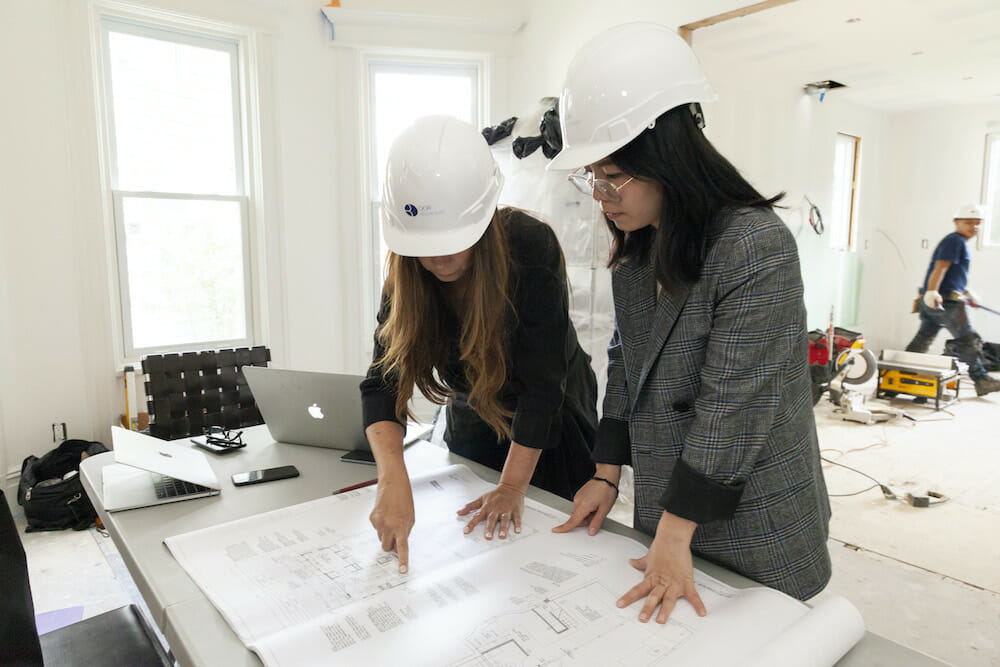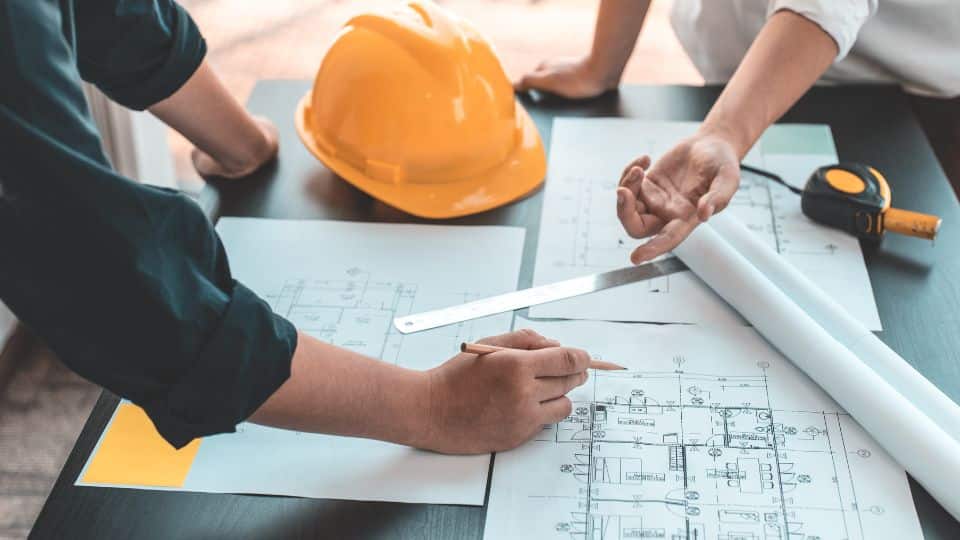Architect Tips for Creating Contemporary Residential Spaces
Architect Tips for Creating Contemporary Residential Spaces
Blog Article
Comprehending the Diverse Job Paths Available for Aspiring Architect
As an ambitious Architect, you have a world of occupation courses waiting for you. Whether you're drawn to conventional style or the subtleties of sustainable layout, there's a specific niche that lines up with your passions.
Traditional Architecture: Designing Structures and buildings
Conventional architecture concentrates on creating structures and frameworks that blend capability with visual appeal. As you explore this field, you'll value the elaborate balance between type and function. You'll learn to draw motivation from historic styles, integrating components like symmetry, materials, and workmanship. Your designs can reflect social heritage, showcasing neighborhood practices while fulfilling modern-day demands.
You'll create abilities in composing, model-making, and site analysis, allowing you to envision and connect your concepts properly. Engaging with customers, you'll need to recognize their vision and equate it into possible designs.
Furthermore, constructing codes and sustainability methods are crucial in your job, ensuring your frameworks are secure and ecologically friendly. As you expand in your occupation, you'll discover opportunities in residential, commercial, or perhaps reconstruction tasks, each offering special challenges. Welcoming traditional architecture leads the way for a meeting career that admires the past while forming the future.
Urban Planning: Shaping Communities and Public Spaces
As an aspiring Architect, you can play a necessary function as a city coordinator, changing just how neighborhoods operate and communicate. By using area engagement approaches, you'll guarantee that residents have a voice in forming their environment. Plus, incorporating lasting design concepts will certainly help develop areas that not only satisfy today's demands but likewise safeguard the future.
Role of Urban Planners
While several might assume of engineers as the single dreamers behind buildings, urban planners play an important role in shaping the broader landscape of neighborhoods and public spaces. By teaming up with different stakeholders, you'll assist create parks, transport systems, and domestic locations that promote social interaction and ease of access. Your competence in spatial design and area characteristics enables you to envision future development while protecting social heritage.
Neighborhood Involvement Methods
Efficient community involvement methods are important for metropolitan planners to assure that the voices of citizens are heard and valued in the planning procedure. To foster purposeful dialogue, you should prioritize open discussion forums and workshops where neighborhood members can share their ideas and concerns. Usage surveys and social media to reach a more comprehensive audience, ensuring varied perspectives are consisted of. Collaborating with regional organizations can boost count on and promote deeper links. It is necessary to give clear information about suggested projects and decision-making procedures, allowing citizens to feel informed and equipped. By proactively including and paying attention feedback, you'll produce rooms that mirror the area's requirements, ultimately causing even more successful and lasting city environments. Accept openness and continuous dialogue for enduring influence.
Lasting Layout Principles
When creating urban spaces, integrating sustainable layout concepts is vital for creating settings that flourish both environmentally and socially. You should begin by concentrating on energy efficiency, utilizing materials that lower waste and advertise recycling. Think about incorporating eco-friendly rooms, like parks and gardens, to boost biodiversity and enhance air high quality. Promoting walkability and public transport can minimize dependence on autos, cultivating a healthier area.
Creating with water conservation in mind is likewise crucial-- think concerning rainfall yards and absorptive surface areas to take care of stormwater. Involving area members during the preparation procedure guarantees that the rooms you create meet their demands and motivate social interaction. By embracing these principles, you'll contribute to dynamic, lasting urban landscapes that profit everyone.

Landscape Architecture: Developing Lasting Exterior Atmospheres
As you discover landscape design, you'll discover vital style principles that produce functional and stunning exterior spaces. Sustainable methods play a crucial function in guaranteeing these atmospheres grow while minimizing ecological influence. Plus, you'll locate a range of job opportunities that enable you to make a genuine distinction in how individuals engage with nature.
Layout Principles in Landscape
Understanding style concepts in landscape design is vital for producing sustainable outdoor settings that harmonize with nature. You'll need to contemplate aspects like proportion, equilibrium, and range to assure your designs feel natural and welcoming. Additionally, pay interest to seasonal changes, making with materials that enhance the environments year-round.
Lasting Practices Summary
Sustainable methods in landscape design not only concentrate on appearances but likewise prioritize ecological health and resource conservation. By incorporating indigenous plants, you boost biodiversity and minimize the need for chemical plant foods and chemicals. Carrying out efficient irrigation systems assists save water and lessens runoff, securing close-by environments. You can design areas that promote dirt wellness, such as practicing and making use of natural products permaculture principles. In addition, integrating environment-friendly facilities, like rainfall yards and permeable sidewalks, help in stormwater management and decreases city warm. When you develop outside atmospheres with sustainability in mind, you add to a much healthier planet and provide spaces that foster neighborhood link. Inevitably, these techniques ensure your designs benefit both people and the setting for several years to find.
Job Opportunities Exploration
With a solid foundation in lasting techniques, landscape architecture uses a variety of job paths that allow you to make a significant impact on the environment. Urban organizers usually team up with landscape designers to create green spaces in metropolitan settings, improving city livability. If you're passionate regarding education, take into consideration coming to be a landscape style educator, inspiring future generations.
Sustainable Layout: Concentrating On Eco-Friendly Practices
As you discover your occupation in style, embracing environmentally friendly techniques can set you apart in a competitive area. Lasting design concentrates on producing structures that reduce environmental effect while enhancing resident well-being. By including sustainable products, energy-efficient systems, and sustainable building techniques, you'll add to a greener future.
Begin by acquiring understanding of green qualifications like LEED or BREEAM, which can strengthen your qualifications. Consider just how natural light, air flow, and thermal performance can enhance layout. Collaborate with designers and environmental professionals to innovate services that reduce waste and save resources.
Don't forget the value of area participation-- interesting regional stakeholders can inspire layouts that integrate with the setting. As customers progressively focus on sustainability, your proficiency in eco-friendly techniques will certainly not just draw in projects however additionally meet your interest for accountable style. Embrace this crucial element of the occupation, and view your occupation flourish.
Historical Preservation: Protecting and Restoring Social Heritage
While you commence on your building trip, consider the vital function of historical conservation in keeping our social heritage. This area concentrates on the security and remediation of significant buildings, websites, and structures that inform the tales of our past. By participating in historic preservation, click to investigate you'll aid guard the architectural legacy that forms neighborhood identity.
As a historic conservation Architect, you'll assess historical significance and examine the condition of frameworks. You'll function carefully with chroniclers and preservationists to guarantee authentic restoration strategies are employed. This profession path permits you to blend creativity with study, enabling you to design solutions that appreciate initial products and craftsmanship.
Your work not just adds to sustainability by recycling existing buildings but additionally cultivates a feeling of pride within neighborhoods. Accepting this path will aid you end up being a guardian of history, maintaining the tales and looks that improve our lives.
Inside Design: Enhancing Indoor Spaces
Historic preservation and indoor architecture both share a dedication to improving the constructed setting, but they concentrate on various elements. While historic preservation emphasizes keeping a structure's social and historical value, interior style nos in on maximizing indoor areas for performance and visual appeals.
As a hopeful Architect, you'll find that interior architecture allows you to blend creativity with technical abilities. You'll design areas that not only look good but also promote comfort and effectiveness. This field entails recognizing exactly how light, shade, and products connect within a space, impacting state of mind and use.
You'll work with numerous tasks, from domestic homes to commercial workplaces, guaranteeing that each setting fulfills the demands of its residents. By focusing on customer experience, you can transform insides into inspiring and useful spaces, making a significant effect on just how people engage with their environments. Embrace the possibility to improve indoor atmospheres and form the way individuals function and live.
Industrial Layout: Merging Performance With Visual Appeals
Commercial style plays a crucial role in developing products that seamlessly mix aesthetics with performance, guaranteeing that what you make use of daily is not only aesthetically enticing but likewise sensible. As an aspiring Architect, you can engage yourself in this field, concentrating on making whatever from furnishings to consumer electronic devices. Your job includes comprehending individual requirements, products, and making processes, permitting you to produce cutting-edge services that boost day-to-day experiences.
In commercial design, you'll usually collaborate with marketing experts, designers, and producers, ensuring that your designs are not just beautiful but likewise viable. This career course uses a vibrant atmosphere where creativity fulfills functionality, making it a gratifying choice for architects interested in forming the products of tomorrow.
Regularly Asked Inquiries
What Educational Accreditations Do I Need to Become an Architect?
To come to be an engineer, you'll require a specialist degree in architecture, normally a Bachelor's or Master's. Additionally, you'll need to complete a teaching fellowship and pass the Architect Registration Assessment to exercise legitimately.
Exist Certification Requirements for Various Architectural Occupation Paths?
Yes, there're accreditation demands for different architectural paths. Architect. You'll need to pass exams, full teaching fellowships, and in some cases pursue specialized training, depending upon your selected emphasis, like landscape design, city layout, or historic preservation
What Software Program Abilities Are Vital for Engineers Today?

How Can I Gain Practical Experience While Researching Architecture?
You can get useful experience by interning at architectural companies, joining design competitors, offering for area tasks, or working together with classmates on real-world tasks. These chances improve your skills and construct important links in the industry.
What Task Opportunities Exist Outside Standard Design Firms?
You can check out numerous work opportunities outside typical design companies, like city preparation, interior decoration, landscape style, construction management, realty development, or also functions in sustainability consulting. Each deals unique obstacles and incentives.
Whether you're drawn to standard design or the subtleties of sustainable layout, there's a specific niche that aligns with your passions.When designing urban spaces, incorporating lasting style principles is important for producing settings that thrive both environmentally and socially.As you explore landscape design, you'll uncover see this site necessary layout principles that her explanation produce gorgeous and functional exterior rooms.Recognizing layout principles in landscape design is necessary for producing sustainable exterior environments that harmonize with nature.In industrial style, you'll commonly work together with makers, online marketers, and engineers, making sure that your styles are not only gorgeous but likewise practical.
Report this page